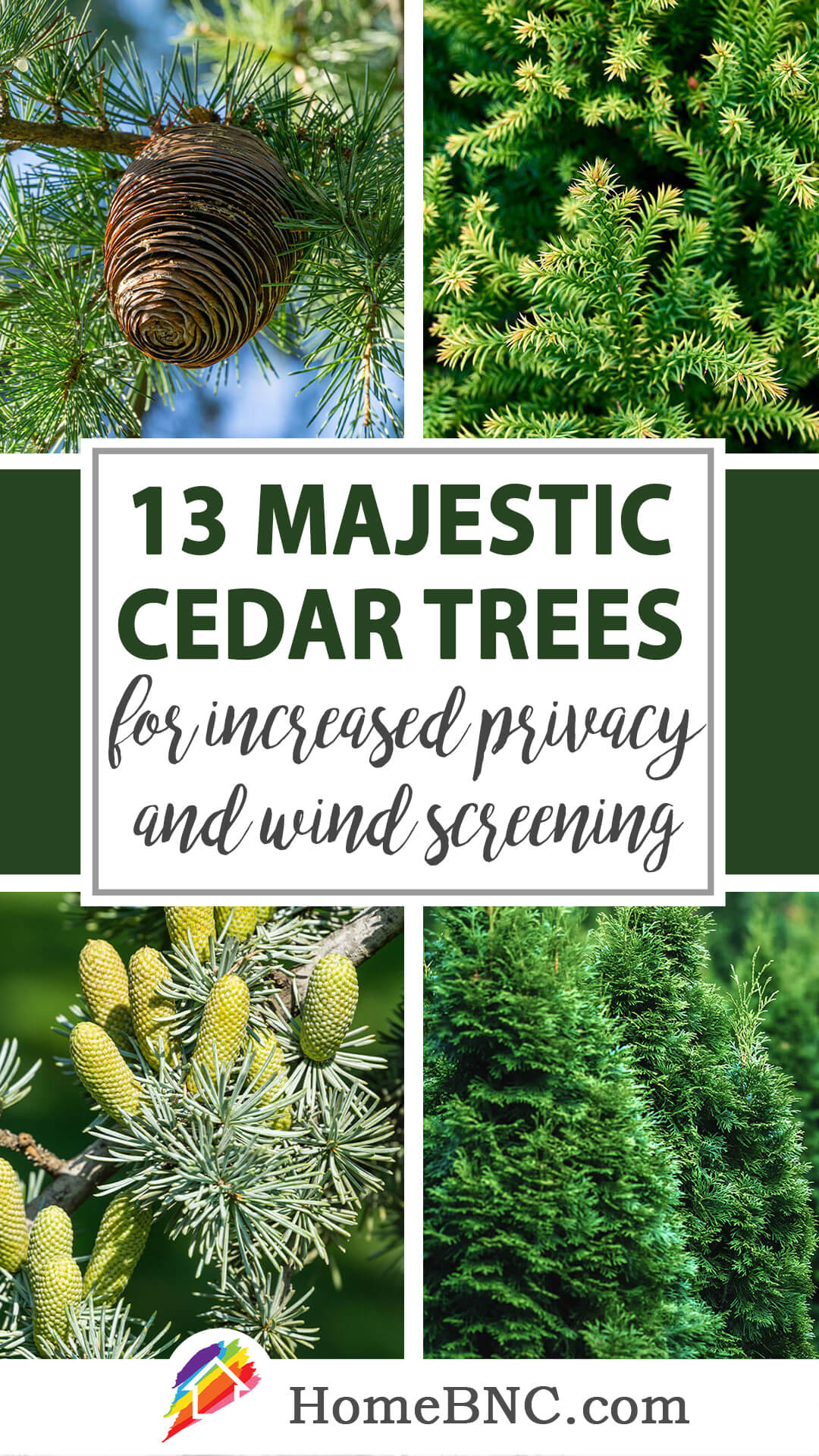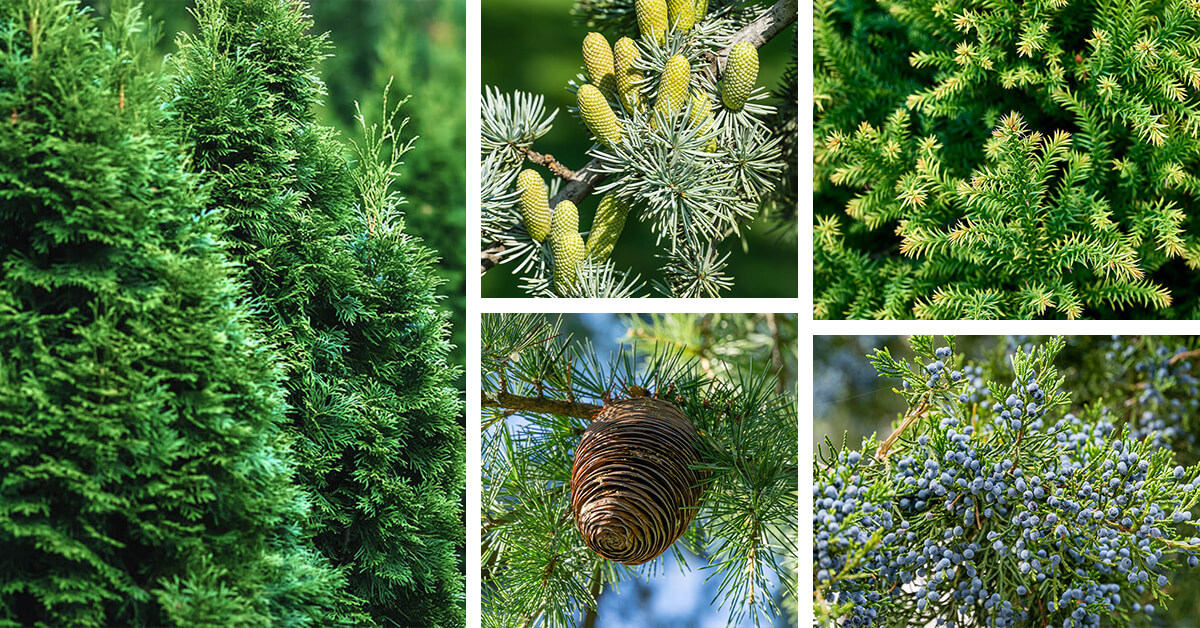There are plenty of scenarios in which you will need a dependable evergreen tree species that can look lush all year round while also providing privacy, wind screening, and ornamental value. In such cases, cedar trees are among the best plant options that you can use. People often feel that all cedar trees are so similar that it is essentially impossible to tell them apart. However, that is not truly the case. The reality is that there are several different types of cedar trees, each of which has unique characteristics that allow it to stand out from the others. In this article, we will introduce you to some of the most popular types of cedar trees so that you can easily select the one that is best for you.
Key Takeaways
- There are a few true cedar tree species and several non-cedar tree species that have cedar in their common name.
- Cedar trees are reliable evergreen species that are often excellent for creating privacy and wind screening.
- Cedar trees come from many different parts of the world, and many of them have names that indicate where they originate.
- Many types of cedar trees are sources of wood that people sell and use for construction and other woodworking.
- There are both naturally occurring and cultivated cedar tree varieties that you can grow in your yard.
13 Various Types of Cedar Trees that Give You Plenty of Options to Choose From
1. Alaskan Yellow Cedar (Cupressus nootkatensis)
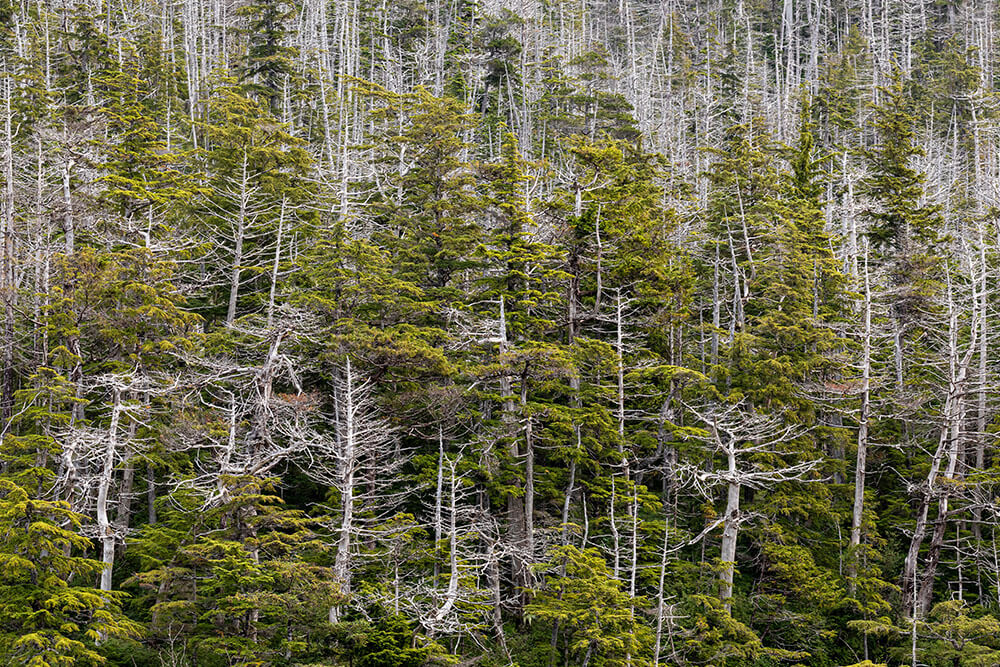
It is true that cedar trees come from nearly every part of the world, and one of those parts is Alaska. In that cold northernmost United States, the Alaskan yellow cedar, or Cupressus nootkatensis, is the most common cedar type that you will find. The native range of this lovely cedar variety also spreads down the west coast of Canada and into the Pacific Northwest region of the United States. Overall, this tree is not the most common cedar outside of that natural range, but it is quite attractive nonetheless. The Alaskan yellow cedar tree has a rigid straight trunk and branches that hold pendulous foliage in a loose pyramidal shape.
2. Atlas Cedar (Cedrus atlantica)
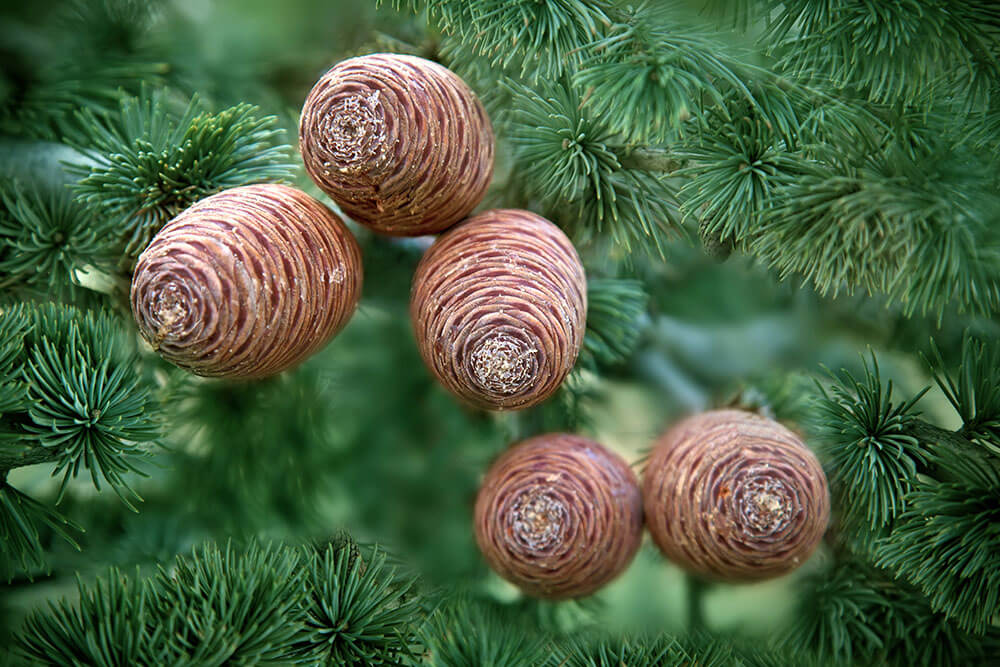
There are only four true cedar species that are not cedars in common name only, and the atlas cedar, or Cedrus atlantica, is one of the most prominent of those four. It is also the first true cedar species we will include on our list. The atlas cedar grows to be about 60 feet tall and 30 feet wide at maturity and tends to have a pyramidal shape that is common in most cedar varieties. However, what makes the atlas cedar atypical compared to other cedars is its foliage color. The atlas cedar tends to have a light blue, almost silvery, color instead of a typical green. That natural blueness in the foliage of the atlas cedar is part of the reason why there are a few common cultivars of this species, many of which emphasize that unique color.
3. Bermuda Cedar (Juniperus bermudiana)
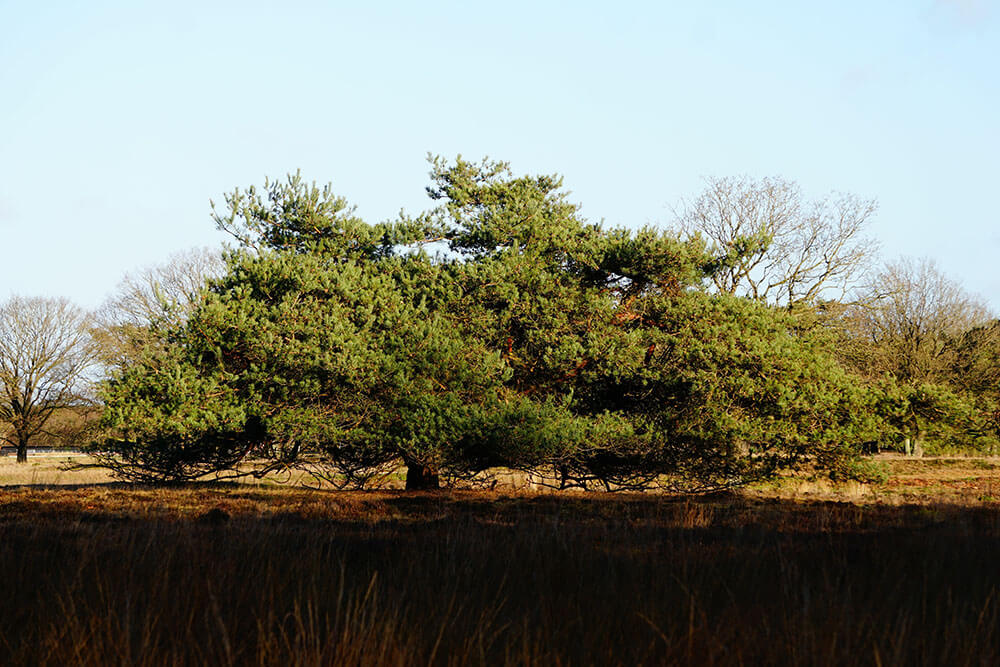
For some reason, people often associate cedar trees with color or mountainous regions. A likely reason for that is that many of the most popular cedar varieties do indeed come from those types of areas. However, there are other cedars, such as the Bermuda cedar, that thrive in warm weather near the ocean. Although not a true cedar in the strict botanical sense, the Bermuda cedar tree is a lovely evergreen option with a thick and sturdy trunk that proudly holds an irregular canopy of branches and foliage. Unfortunately, although the Bermuda cedar tree is quite lovely, it is also a critically endangered species, which is all the more reason to plant it now before it is gone entirely.
4. Blue Atlas Cedar (Cedrus atlantica ‘Glauca’)
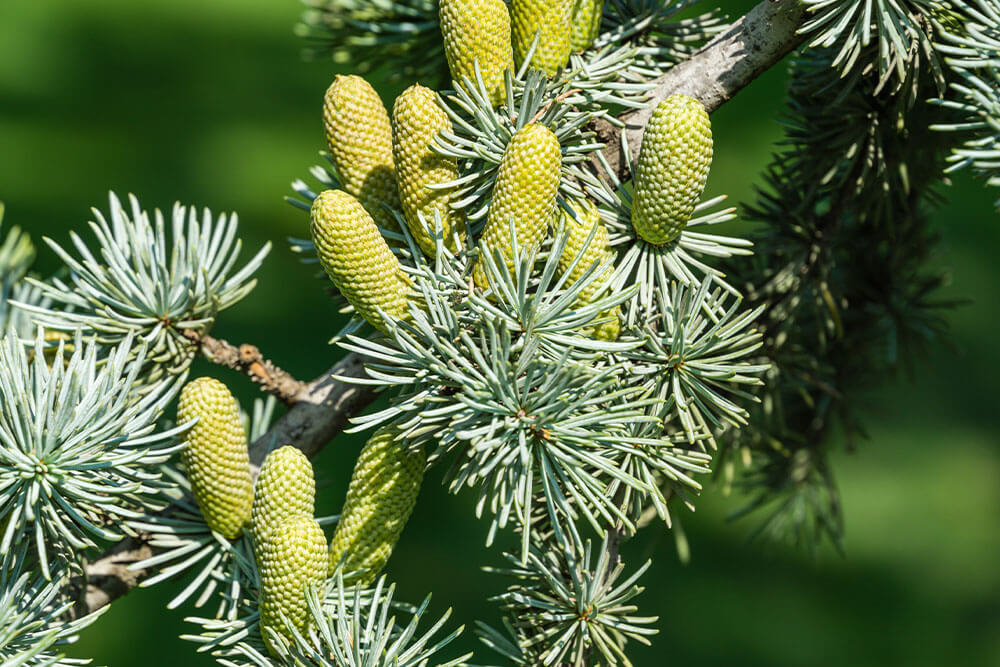
Here we reach the first cultivated cedar variety on our list. In this case, the blue atlas cedar is, as you might guess, a cultivated variety of the atlas cedar that goes by the botanical name Cedrus atlantica ‘Glauca.’ As we mentioned when detailing the delights of the original atlas cedar, there are several cultivars of that species that emphasize foliage colors. The blue atlas cedar is the perfect example of that color emphasis. It takes the naturally blueish silver needle color of the atlas cedar to a richer and more vibrant degree, making it all the more suitable as a garden focal point. But while it the foliage characteristics of this plant are different, the other features of the blue atlas cedar remain quite similar to those of the regular atlas cedar.
5. Cyprian Cedar (Cedrus brevifolia)
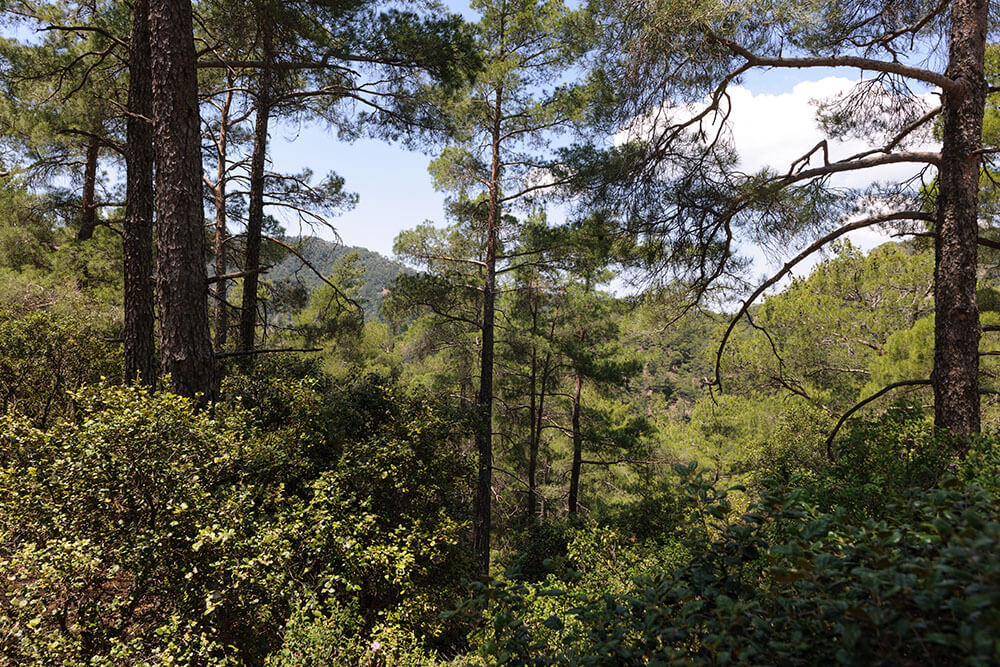
We have now arrived at the second of the four real types of cedar trees, following botanical definitions. In this entry, the Cyprian cedar tree is a bit smaller than the first true cedar we mentioned, as it reaches only about 40 feet tall at its mature size. Still, the Cyprian cedar tree maintains a similar overall form, which is loosely pyramidal. However, despite being similar to the atlas cedar in overall form, the Cyprian cedar tree differs in its foliage characteristics. The needles of the Cyprian cedar tree are small and numerous and grow tight to the edge of the stems from which they emerge. That foliage quality gives the Cyprian cedar tree a canopy texture that is a bit more fine and airy than that of other cedar tree varieties that you will come across.
6. Deodar Cedar Tree (Cedrus deodara)
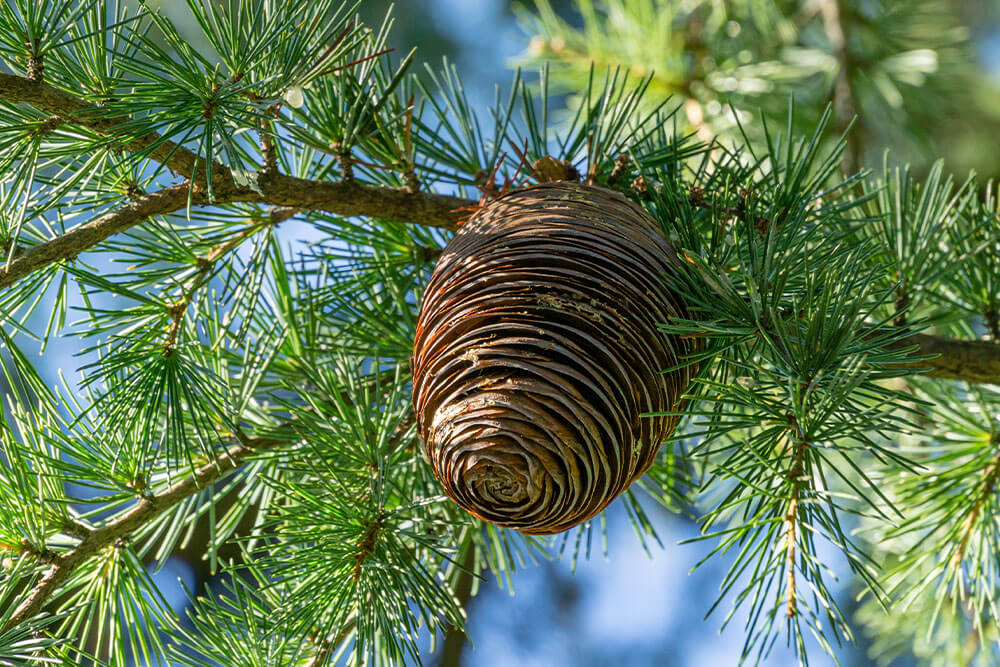
Let’s follow up the second true cedar species by immediately introducing the third, and perhaps most popular, of the true cedar trees. The deodar cedar tree, known botanically as Cedrus deodara, is another large evergreen tree with remarkable foliage. Each needle of the deodar cedar tree is relatively rigid and quite thin. Overall, these needles create a green pyramidal canopy that has a grayish hue cast across it. However, the needles of the deodar cedar tree are not the only feature of this species that holds ornamental value. Instead, the cones of this plant are so striking that they may be the most appealing part of the plant. Each cone stands upright while pointing towards the sky. Each one also has an incredibly high number of layers that give the cones a rich and intricate appearance.
7. Eastern Red Cedar Tree (Juniperus virginiana)
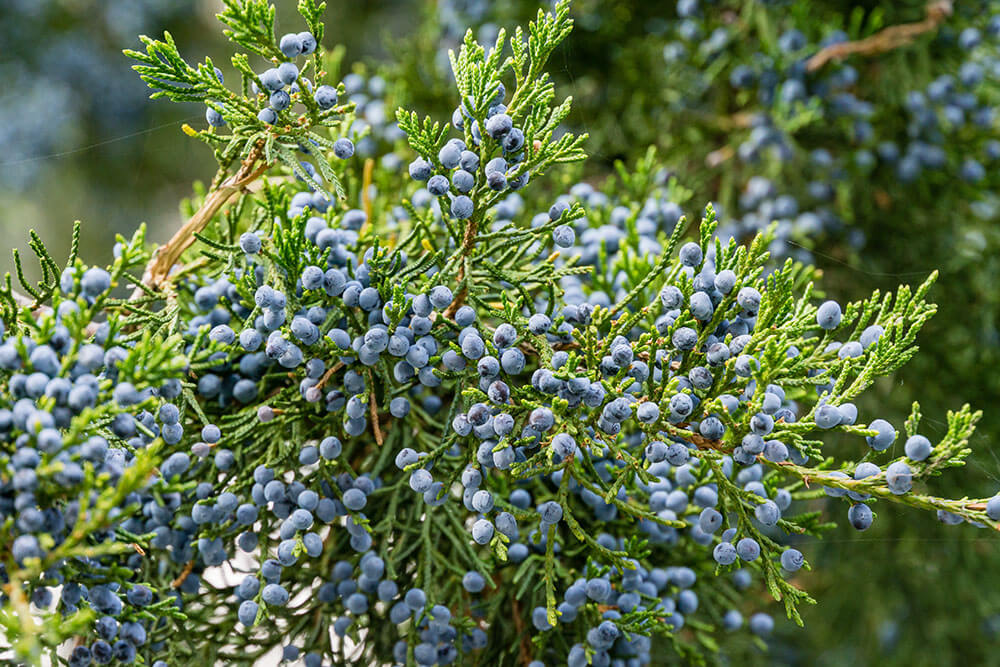
This entry on our list of types of cedar trees is not true cedar, but it may be the most popular of any tree that has cedar in the common name. The eastern red cedar is an incredibly attractive evergreen tree species that is excellent as a hedge or as a specimen focal point in your garden. Eastern red cedar trees have dense foliage that is relatively sharp and forms a tight conical shape as the tree’s overall form. At times, the foliage of the eastern red cedar tree does appear to be slightly red. However, the fruits of this tree will provide outstanding contrast. They are small and appear in tight, bright blue clusters every season.
8. Golden Deodar Cedar (Cedrus deodara ‘Aurea’)
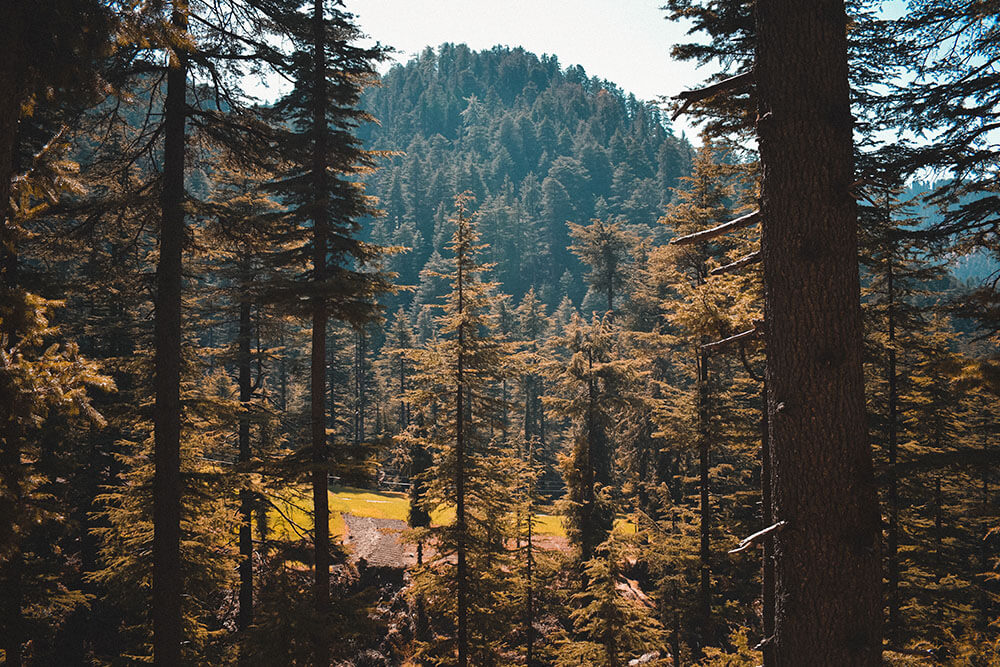
When discussing previous true cedars on this list, we mentioned that they often have cultivated versions as well. This theme continues to be true, in this case, for the deodar cedar, which has a prominent cultivar known as the golden deodar cedar, or Cedrus deodara ‘Aurea.’ Compared to most other cedar trees in the world and on this list, the golden deodar cedar tree is relatively small. It grows to be about 20 feet tall, which means it is one of the best cedar options for those who don’t have the growing space that a massive cedar tree requires. In addition to being on the smaller side, the golden deodar cedar tree also has foliage that is different from that of other cedars and is the inspiration for this plant’s common name. Fittingly, the golden deodar foliage has golden foliage that fades to a rich green as it ages.
9. Incense Cedar (Calocedrus decurrens)
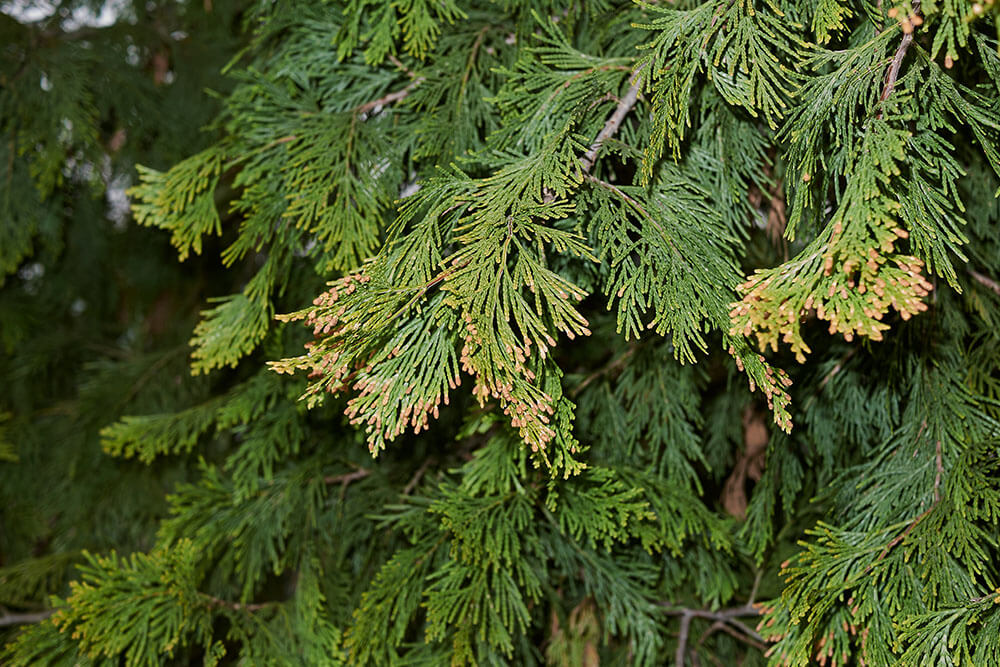
The incense cedar, sometimes called the California incense cedar tree, is a species that is native to the west coast of the United States and has an incredibly variable growth habit. In some cases, an incense cedar tree may grow to be just 15 feet tall. In other cases, this same species can reach amazing heights of over 100 feet tall. But while those heights are impressive, it will take a while for the incense cedar tree to achieve its mature size due in large part to the fact that it is a slow-growing species. Still, even though this tree is slow growing, that is all part of what makes the incense cedar tree easy to care for and manage. Additionally, most incense cedar trees also prove to have great resistance to drought, making them an excellent option for those who live in regions that don’t experience significant rainfall.
10. Japanese Cedar (Cryptomeria japonica)
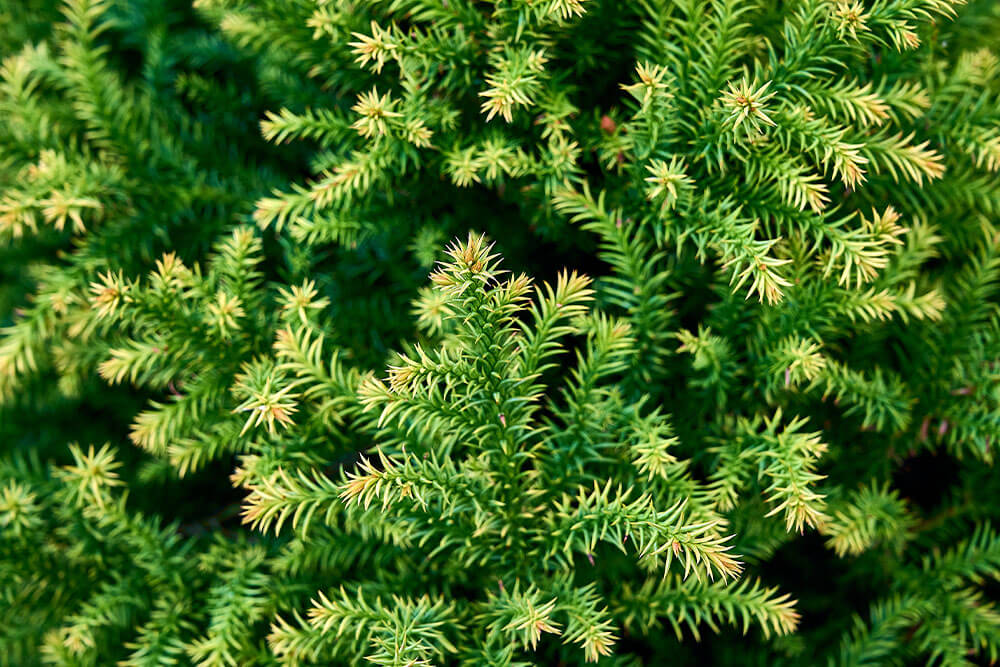
Although many of the cedar trees we have mentioned and will mention on this list are beautiful, the Japanese cedar tree may be one of the most vibrant options you can choose. For example, the foliage of this plant is surprisingly bright, even though it is green, thanks to the fact that it has a light yellow tint to it. The seed cones of the Japanese cedar tree are also quite showy. They dangle from the branches in small ball-shaped clusters and have a very spiky texture. Along with those features, the bark of the Japanese cedar tree is also shockingly appealing to the eye. It features long peeling strips that continue to separate as the tree expands. The color of the bark is light brown but can feature yellowish-orange accents as well.
11. Lebanese Cedar (Cedrus libani)
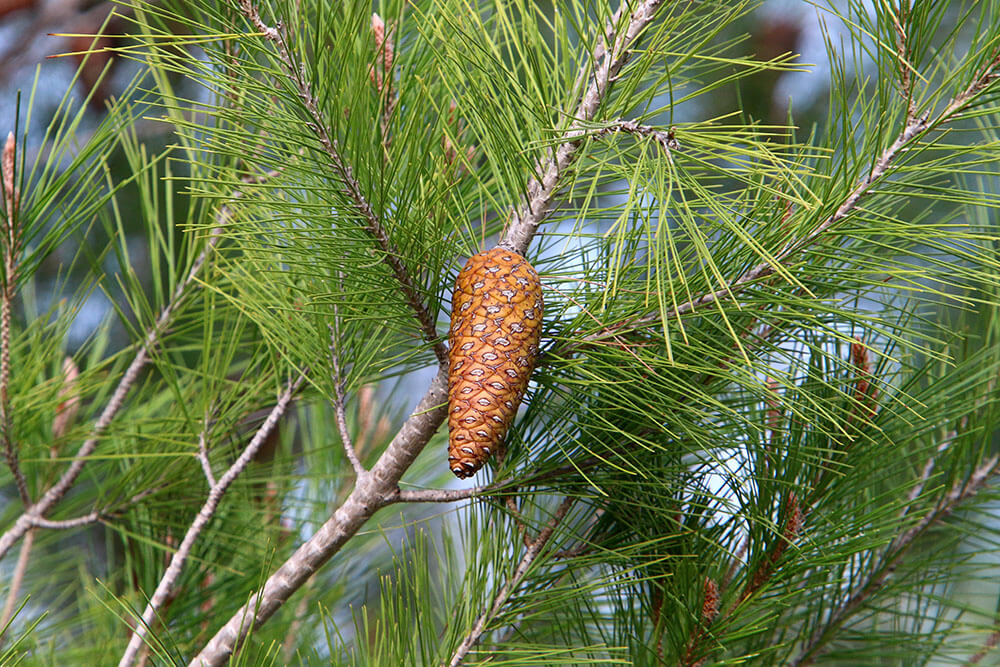
Here we have the final of the four true cedar species, the Lebanese cedar, or Cedrus libani. In some sense, the Lebanese cedar may be the most recognizable cedar in the world. This is in part due to the fact that it is quite attractive and abundant in certain locations and in part due to the fact that the country of Lebanon has added a bold image of a Lebanese cedar tree as a central emblem on its flag. Indeed, the Lebanese cedar tree is native to Lebanon and other areas that border the Mediterranean Sea. In that native range, when conditions are right, you can find stands of Lebanese cedar trees growing to massive heights of 100 feet or more while also developing canopies that spread wider in relation to their height than most other cedar trees.
12. Siberian Cedar (Pinus sibirica)
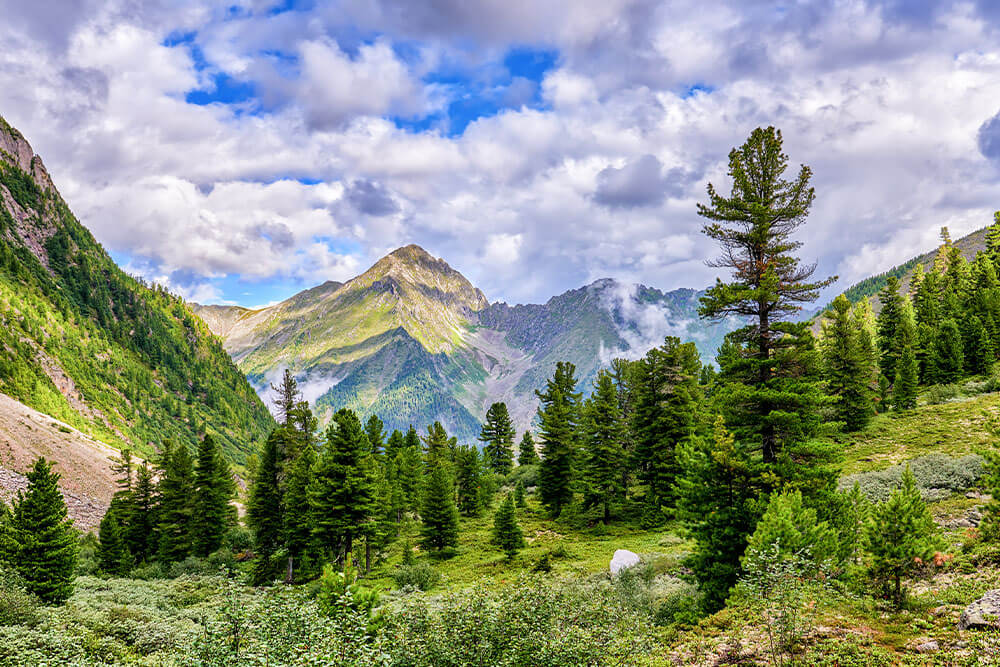
The Siberian cedar tree is native to Eurasia, where it is a common feature of the forested landscape. However, despite having that common name, the Siberian cedar tree is a pine tree species rather than a true cedar. The greatest evidence of that is in this plant’s botanical name, which includes the genus name Pinus, indicating the pine group. Overall, the Siberian cedar tree has an incredibly narrow form while also being quite tall. In its native range, you can find many Siberian cedar trees growing freely. Part of what allows this plant to spread far and wide is the fact that it is resilient in the face of harsh winds and winter weather, which makes it all the easier to care for this plant if you live in a region that experiences those conditions.
13. White Cedar (Thuja occidentalis)
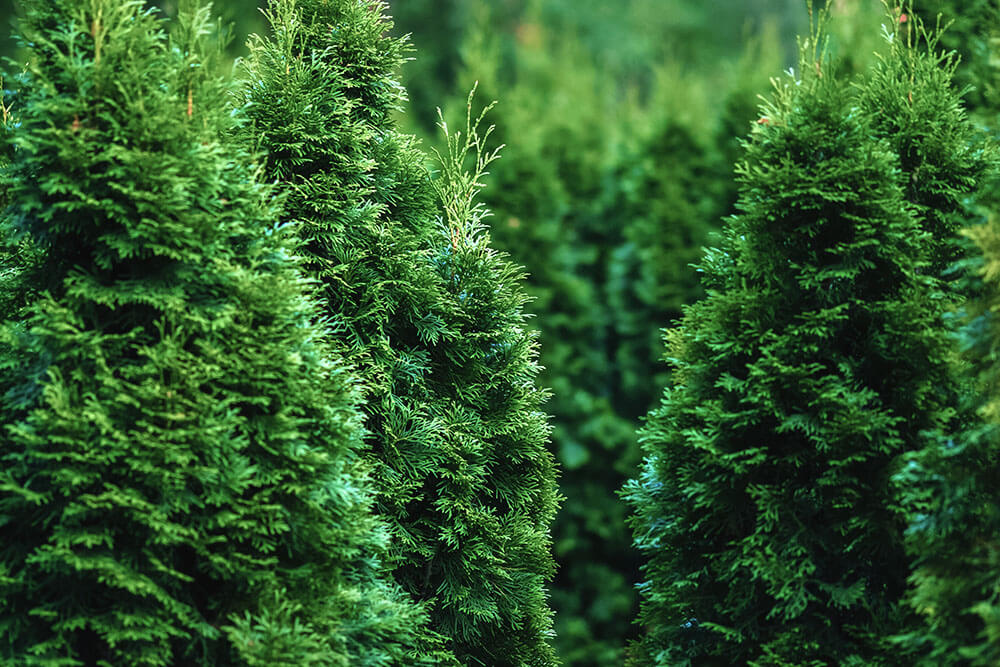
We will finish off our list with what is not only one of the most widely used cedar trees but also one of the most widely used landscaping shrubs in general. The white cedar, which often goes by the name arborvitae, is an astoundingly popular hedge plant that is used ubiquitously throughout residential and commercial landscapes. The reason why this plant is so commonly used is that it is dependable, easy to care for, and fantastic for blocking wind, sound, and sight lines. Again, this tree is not one of the true cedar varieties, but it is commonly referred to as a cedar, which is why it appears here. Give your white cedar plenty of sunlight, and it will reward you by requiring very little maintenance.
[wp-faq-schema title=”Frequently Asked Questions About Cedar Trees” accordion=1]If you are someone who is interested in cedar trees, there is a good chance that the information we presented in the list above is not enough to curb your curiosity about this fantastic plant group. In fact, this thirst for cedar tree knowledge is often present whether you have extensive experience with these trees or not. In order to meet that demand for cedar tree knowledge, we have determined that it is important that we give you a bit more information before we conclude the article. As such, below are a few answers to the questions people ask most commonly about cedar trees.
13 Vibrant Types of Cedar Trees that Are More Impressive than You Would Ever Expect
Cedar trees come from many different parts of the world, and they come in many different varieties as well. At the beginning of this article, the odds are that you were not aware of how much variety cedar trees can offer. Hopefully, now that you have finished your reading here, you now have a greater and deeper understanding and appreciation of cedar trees. From that understanding and admiration, you can begin the process of selecting the best type of cedar tree for you. When the time comes for you to make a selection, we trust that our list of the best types of cedar trees will serve you well during the plant selection process.
